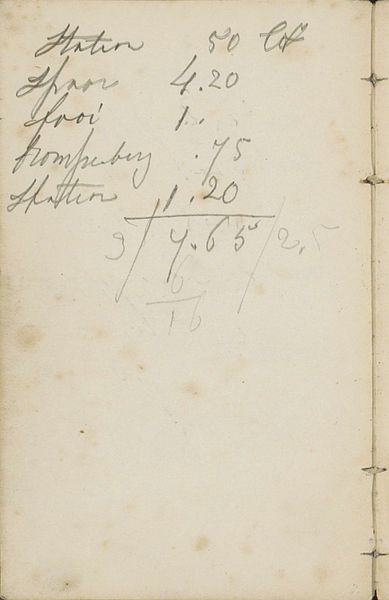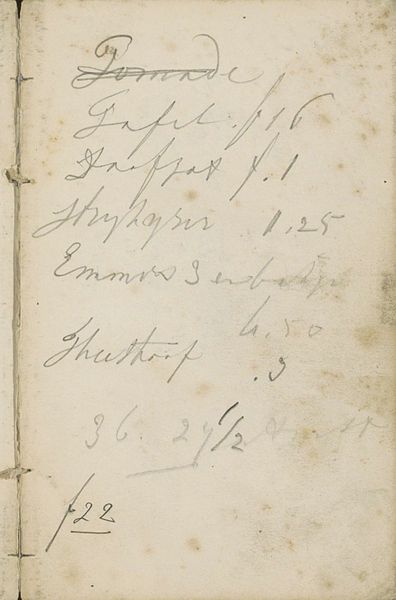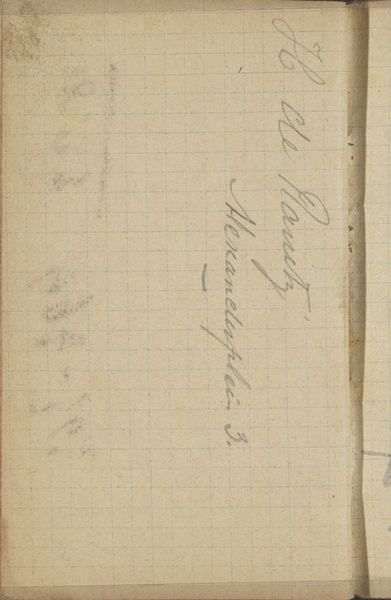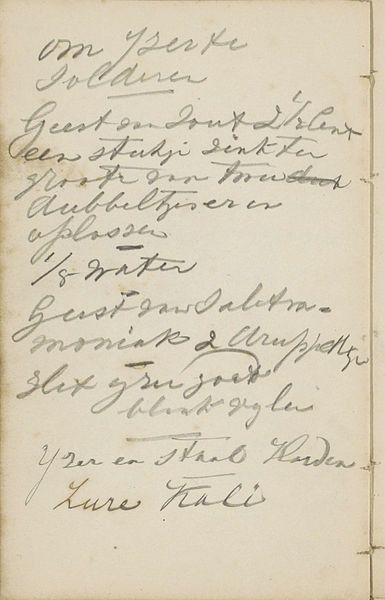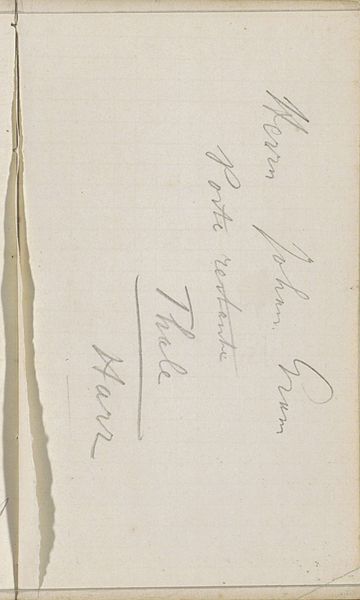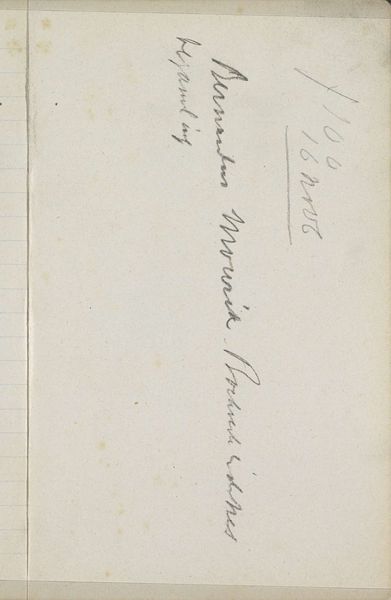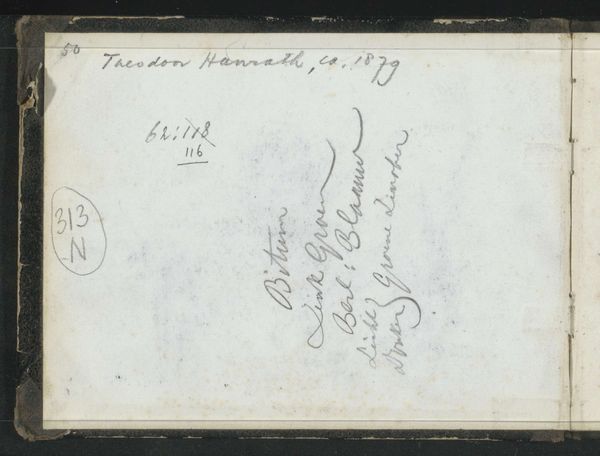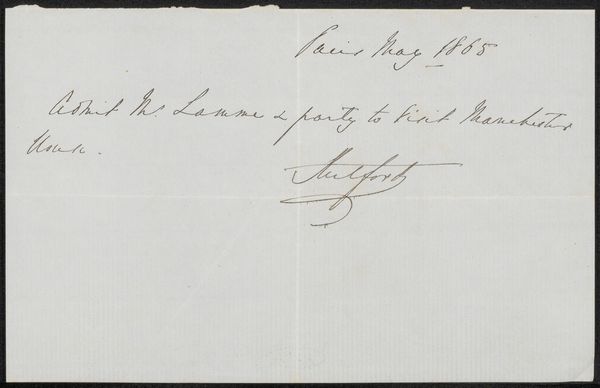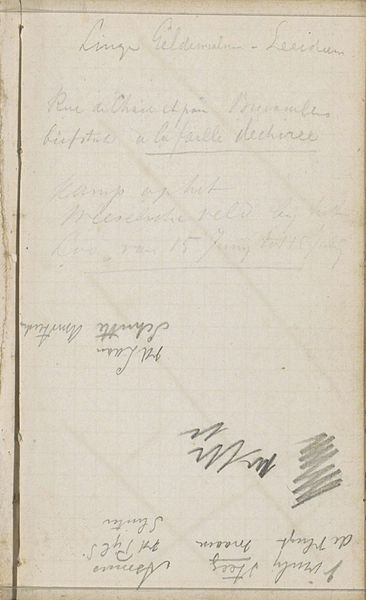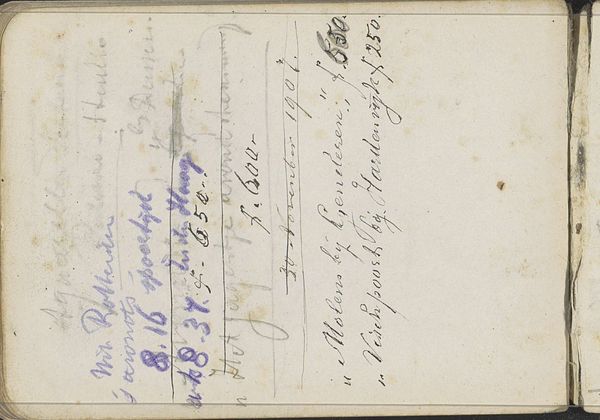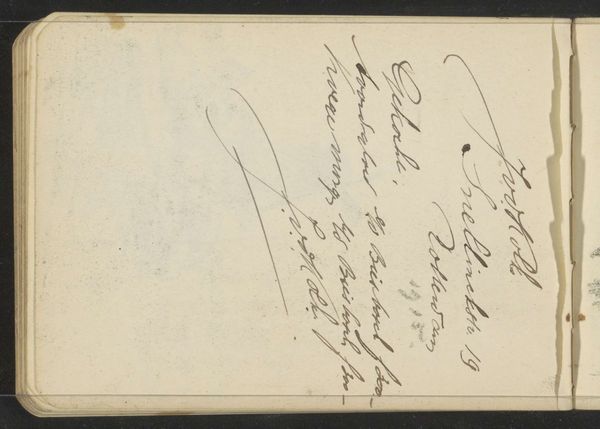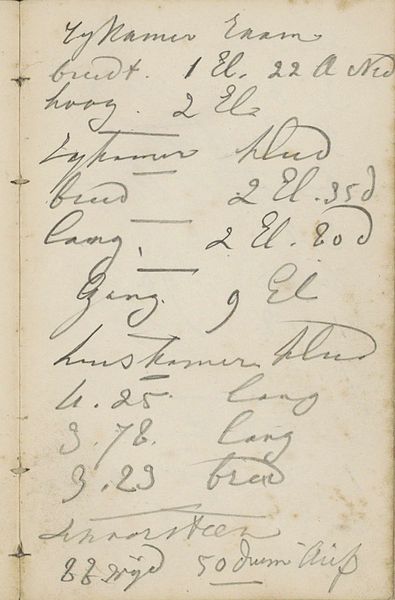
drawing, paper, pencil
#
portrait
#
drawing
#
aged paper
#
hand written
#
script typography
#
hand-lettering
#
hand drawn type
#
hand lettering
#
paper
#
hand-written
#
hand-drawn typeface
#
fading type
#
pencil
#
genre-painting
#
realism
#
small lettering
Copyright: Rijks Museum: Open Domain
Curator: Immediately I'm struck by how fragile this appears; the paper looks almost like it would crumble to the touch. Editor: Indeed. What you’re seeing is “Adressen,” a work on paper attributed to Willem Koekkoek and created sometime between 1849 and 1895. It is a pencil drawing that can be found here in the Rijksmuseum. Curator: So, just a modest drawing. Still, the subject matter, simply a list of names and addresses, evokes so many questions. Whose list is this? Why was it preserved? It's a potent intersection of the public and private spheres. Editor: Right. It really underscores the means of record keeping during this period, where handwriting defined correspondence and documentation. The materiality of the pencil against the paper, the skill involved in creating legible yet elegant script – that all represents a form of labor largely absent in our digital age. Curator: It's interesting, thinking about these addresses now, as fixed points within a rapidly changing urban landscape. Who lived at "123 Toll Mall?" And what social and economic strata did they represent? That faded ink whispers stories of social networks, maybe even resistance or marginalized communities finding solidarity in numbers. Editor: And look closely. The degradation of the paper shows the inherent ephemerality of material culture. This fragility invites us to consider preservation not just as conservation, but as a constant process of reinterpretation and contextualization of the artist’s intention by viewers throughout generations. Curator: Exactly! Thinking about the drawing within the historical context of 19th-century Dutch society raises such questions. What rights did these individuals have? Who had power, and who didn’t? "Adressen" then becomes not just a drawing, but an archive of power dynamics. Editor: It shows us the art isn't separate from material reality, but a record and artifact of a very real place. Examining what survives, what is deemed worthy of preserving, says so much about societal values and priorities and leaves one thinking long after we turn to walk away. Curator: Absolutely. Thank you for elucidating that materiality. Considering the social context interwoven with the artistic process is, ultimately, what helps art become truly meaningful.
Comments
No comments
Be the first to comment and join the conversation on the ultimate creative platform.
